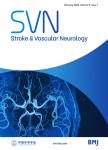Development of machine learning-based models to predict 10-year risk of cardiovascular disease:a prospective cohort study
作者机构:Institute of Science and Technology for Brain-Inspired IntelligenceDepartment of NeurologyHuashan HospitalState Key Laboratory of Medical Neurobiology and MOE Frontiers Center for Brain ScienceFudan UniversityShanghaiChina Key Laboratory of Computational Neuroscience and Brain-Inspired IntelligenceFudan UniversityMinistry of EducationShanghaiChina Zhangjiang Fudan International Innovation CenterFudan UniversityShanghaiChina School of Data ScienceFudan UniversityShanghaiChina Fudan ISTBI-ZJNU Algorithm Centre for Brain-inspired IntelligenceZhejiang Normal UniversityZhejiangChina Shanghai Medical College and Zhongshan Hospital Immunotherapy Technology Transfer CenterFudan UniversityShanghaiChina
出 版 物:《Stroke & Vascular Neurology》 (卒中与血管神经病学(英文))
年 卷 期:2023年第8卷第6期
页 面:475-485页
核心收录:
学科分类:1002[医学-临床医学] 100204[医学-神经病学] 10[医学]
基 金:the National Natural Science Foundation of China(82071997,82071201) National Key R&D Program of China(2018YFC1312904,2019YFA0709502) Science and Technology Innovation 2030 Major Projects(2022ZD0211600) Shanghai Municipal Science and Technology Major Project(2018SHZDZX01) the 111 Project(B18015) hanghai Rising-Star Program(21QA1408700) Research Start-up Fund of Huashan Hospital(2022QD002) Excellence 2025 Talent Cultivation Program at Fudan University(3030277001) Shanghai Municipal Health Commission New Interdisciplinary Research Project(2022JC014).
主 题:cardiovascular prediction learning
摘 要:Background Previous prediction algorithms for cardiovascular diseases(CVD)were established using risk factors retrieved largely based on empirical clinical knowledge.This study sought to identify predictors among a comprehensive variable space,and then employ machine learning(ML)algorithms to develop a novel CVD risk prediction model.Methods From a longitudinal population-based cohort of UK Biobank,this study included 473611 CVD-free participants aged between 37 and 73 years old.We implemented an ML-based data-driven pipeline to identify predictors from 645 candidate variables covering a comprehensive range of health-related factors and assessed multiple ML classifiers to establish a risk prediction model on 10-year incident CVD.The model was validated through a leave-one center-out cross-validation.Results During a median follow-up of 12.2 years,31466 participants developed CVD within 10 years after baseline visits.A novel UK Biobank CVD risk prediction(UKCRP)model was established that comprised 10 predictors including age,sex,medication of cholesterol and blood pressure,cholesterol ratio(total/high-density lipoprotein),systolic blood pressure,previous angina or heart disease,number of medications taken,cystatin C,chest pain and pack-years of smoking.Our model obtained satisfied discriminative performance with an area under the receiver operating characteristic curve(AUC)of 0.762±0.010 that outperformed multiple existing clinical models,and it was well-calibrated with a Brier Score of 0.057±0.006.Further,the UKCRP can obtain comparable performance for myocardial infarction(AUC 0.774±0.011)and ischaemic stroke(AUC 0.730±0.020),but inferior performance for haemorrhagic stroke(AUC 0.644±0.026).Conclusion ML-based classification models can learn expressive representations from potential high-risked CVD participants who may benefit from earlier clinical decisions.



